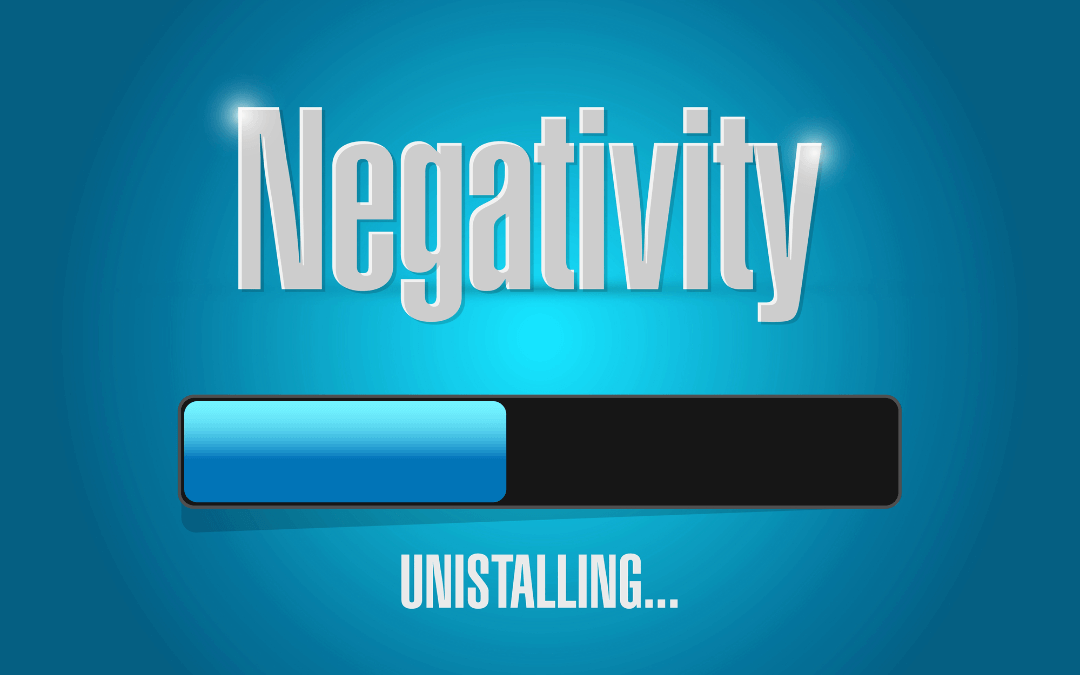Ever wondered why it is so difficult to stay positive these days no matter how many resolutions you make? It’s not you. It’s them. Our societies have a decided negativity bias.
The day started well. I jumped out of bed, hummed a tune in the bathroom and danced while I made breakfast. Ok, so most days are not quite so hilariously cheerful. But in the past I used to start my days in a pretty good mood, only to end it sad, depressed or angry. What happened in-between? I engaged with people and went on social media.
The media
Social media, blog posts and news outlets have figured out that we are more likely to click on a link to their site if they use scary headlines. Coming up with negative headlines is much easier if you solely write about problems. So that’s what media outlets focus on.
Words like “don’t”, “failure”, and “mistake” are incredibly common because they are attention grabbing. The language used in the actual content is just as negative. Problems and issues are reported on at length but if you want to know how they were resolved in the end – and most problems are eventually resolved! – you now have to do your own research.
Our brains cannot distinguish between thoughts about ourselves and events that do not actually concern us. If you think a scary thought, your brain triggers the fear reaction. If you get angry, it does not matter whether there is a personal reason. The chemical chain reaction for anger is triggered automatically in your body.

The people
How do you connect with colleagues? What was the last conversation you had with a stranger? Remember school? How did you make friends back then? Chances are the answers to all of these questions is through a mutual complaint.
The easiest way to connect to a stranger is by complaining about something they can relate to. Don’t believe me? Take the bus and watch what happens when it is late. Almost everyone at the stop will complain or make complaining noises and before you know it you’re part of a group.
We socialise through negative stories. The next time someone tells you how they solved a problem or an issue listen carefully. How much time do they spend talking about the problem and how much time about the solution? I bet the ratio is 90% : 10%. If you are feeling particularly brave, listen to yourself the next time you tell someone how you solved a problem. What is your ratio?
Why are we so negative?
Partly for evolutionary reasons. Focusing on the danger kept us alive. When you are in a field, you want to notice the snake and focus on it easily, instead of being distracted by the blue sky and beautiful flowers around you. But the habits encouraged by our societies strengthen this effect.
Neurons that fire together wire together. Thinking in certain ways, just like feeling certain emotions, becomes easier the more often you do it. Repeat the same thoughts and sentences often enough, and you have yourself a habit.
When you learn a new language, this is fantastic. You repeat the same words again and again until you don’t have to consciously search for them in your mind. They just come to you naturally. Why, of course you remember the words for table, waiter and bill when you are in a restaurant.
All of our other thoughts work exactly the same way and for decades, we practised negative language. The words come easily, automatically, and everyone’s using them anyway so what could possibly be wrong with that?

The price
Thoughts trigger emotions. Emotions trigger thoughts. When you read a word or hear a sentence spoken, this turns into a thought in your mind as your brain processes it. The thought triggers emotions, which in turn trigger similar memories and even give you similar ideas.
When you are with a friend who complains about their internet provider, your brain will dredge up all the times the internet failed you. Their agitation is contagious and before you know it, you’re angry at all the internet providers out there.
Anger and fear are in themselves useful emotions because they give you information. But they are supposed to give you information about your here and now. When we read, listen to and even tell stories that are no longer (or have ever been) relevant to us, we experience these emotions for no good reason.
Changing bad habits
Over time, the physical reactions caused by anger and fear take their toll on our bodies and our minds. I could scare you now with a list of what long-term anger and fear do to your body. And – full disclosure – the first draft actually included that list. But I choose to practise what I preach.
Being positive and happier makes you more creative, which in turn means you solve problems easier. Excitement is a wonderful source of energy. And when you are calm, you make less mistakes. A positive attitude makes all the difference.
So, how do you escape the negativity bias? It’s everywhere. Are you supposed to lock yourself in your room, find a job you can do remotely and with zero people contact and never read or watch an article online again? No. But there are a few steps you can take to protect yourself.

How to become more positive
The good news first: You already took the first step. You have read this post so far and know that the negativity bias exists. Awareness of a habit you want to change is the most important step towards shifting it. Now let’s dive into the other steps.
1. Decide to kick the negativity bias
Make the conscious decision that you want to become more positive and lead a happier life. Decide right now and set your intention. Write the following sentence and put it somewhere where you see it every day. Add reminders to your calendar to actively and consciously recommit at least once a day by repeating your statement.
I, [name], am becoming more and more positive every day.
2. Avoid the negative
Don’t click on negative headlines any more. There are all kinds of algorithms working behind the scenes noticing everything you do. So you only have to practise self-control for a while until they automatically stop showing you negative content.
What about the colleague, family member or friend who is constantly negative? Avoid them. Seriously. Find excuses to get away if they catch you, say no if they want to meet you for coffee and do your best not to feel guilty. Happiness and joy are your birthright. Defend it as if your life depended on it (because it does).

3. Embrace the positive
Click on happy headlines. Watch the funny videos and read the hilarious memes. Make lists every evening about the things and people you love in your life and why you love them. Tell stories at work about how fantastic your laptop is and how wonderfully fast your internet works.
Praise people. Thank them when they help you. Notice what you like about them and tell them. Share jokes and funny memes and add positive comments. Tell them success stories.
By the way, do this long enough and the negative people will get so annoyed with your cheerfulness, they will avoid you.
4. Increase your vocab
People have trouble identifying positive emotions because we rarely talk about them. Time to increase your vocabulary. Apps like How We Feel help you notice the good feelings and name them.
Cut out the don’ts. How can you phrase what you were about to say in a positive statement? “Don’t turn off the laptop” becomes “Keep your laptop on.” Change negative phrases to their positive versions. “I can’t finish the report today” becomes “I will finish the report tomorrow.”
Every word and every sentence counts because it’s all practise. You learned negativity the same way. You heard the negative words, sentence structures and phrases. You repeated them without realising what you were doing. Now that you know, you can replace negative with positive language. Sentence by sentence, word by word. Practise is everything.
5. Emotional distance
When you do happen to read a scary headline or get angry at someone else’s misfortune, pause. You can choose your emotions as long as you notice them quickly and they are not overwhelming.
How do you do that? You practise Emotional Intelligence Skills. Self-awareness allows you to notice your emotions as soon as possible and you keep your baseline at a healthy low with emotional hygiene.
When unwanted anger or fear come up, remind yourself that you are in charge of how you feel. This issue does not concern you. Even if it does, you’ve handled everything life has thrown at you before and so has the person you are talking to. It’s fine. It’s all good. Everything is really so very alright.

Be kind to yourself
Practise these five steps daily. And when you think you “fail”, think again. There is no such thing. There is just learning and that comes with minor hiccups. When you learned to walk, you had to fall so your brain could adjust to the new movement.
Now that you are ready for a positive life, your brain needs to adjust to new ways of thinking. You consciously fire those neurons until they are wired together. Before you know it, you can be surrounded by negative people and stay calmer than you’ve ever been before.
The negativity bias is real. It’s not you. It’s them. Over time, though, habits have turned you into a part of them. But just like you learned to be negative, you can now learn to be positive. If you do it consciously, you’ll be beaming from ear to ear faster than you think.
